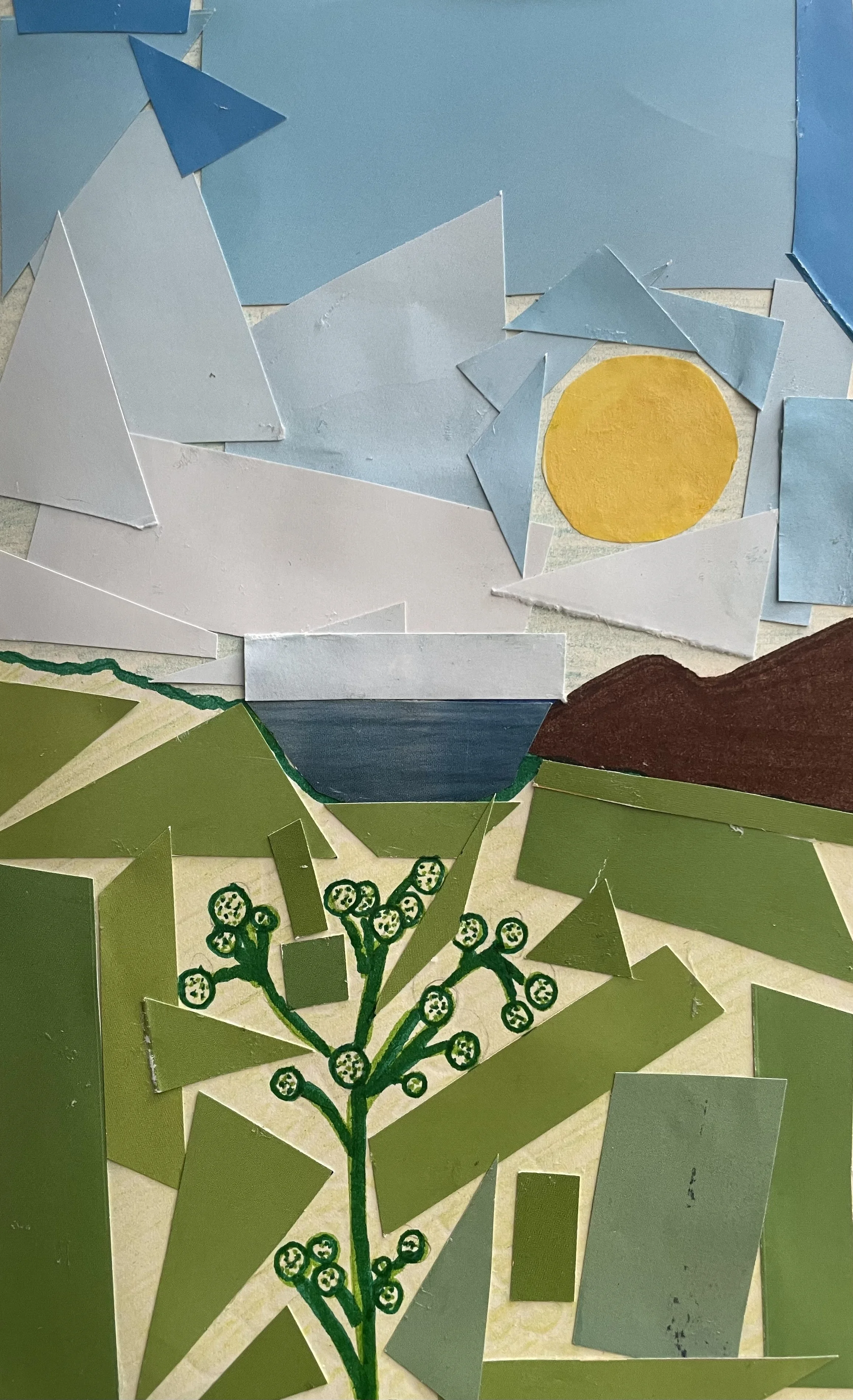Valdivia · Curiñanco
Valdivia
My dad and I rode into Valdivia, ancestral land of the Mapuche, on day 95 of the Israeli attack on Gaza. We immediately bought our tickets to Bariloche at the bus terminal for three days later, and I reflected upon how privileged it is to travel, to buy a ticket to cross the border. Earlier I started Enter Ghost by Isabella Hammad and the first scene of the book takes place in the Haifa airport when the narrator, who is a non-Israeli Arab, is forced to strip as she arrives in her homeland for the first time in eleven years. I thought about all my friends with precarious legal statuses, and about people in Palestine: All the walls are connected, we say.
Valdivia is located in the Chilean Región de Rios (Region of Rivers) and it is a gorgeous quaint little city. We walked by the riverbank and found the fish market, a big construction with a colorful roof circled by hundreds of crows waiting to eat the remains of the fish thrown away by the fisher people. Some sea lions were taking the sun by the building, also hoping to catch some leftovers.
We crossed the bridge into Isla Teja and walked to the Austral University of Chile, where the museums in Valdivia are located. The campus is so beautiful and peaceful, full of vegetation. We first went to the Botanical Garden, where we saw many native plants, and then to the Historical and Anthropological Museum of Valdivia. The walls of the museum, like those in Neruda’s house, are adorned with 17th and 18th century European maps of the Americas. We learned that Valdivia was founded in 1552 and colonizers compared it to paradise. A letter in the museum written by a settler in 1554 reads, “If you come here you will not remember Spain, given that everything is not lacking like it is in Castilla. There is no cold or heat or hunger. I have never seen better weather. Please, when you come, bring a Black woman to look after you on the ship and to look after the house once you arrive here.”
In the museum there is a Mapuche Silverware Room where I found out that Mapuche jewelry traditions go back 3,000 years (people started inhabiting the area 14,000 years ago), and the jewels contain the family history of the person wearing it. The Mapuche fiercely resisted colonialism in Valdivia, and in 1558 they destroyed the Spanish settlement, leading to the abandonment of the city for the next 50 years, until the Dutch claimed a piece of the pie and the Spanish came to defend it.
Mapuche jewel · Historical and Anthropological Museum of Valdivia
After the museum, we went to the riverbank and enjoyed the colorful nightlife: cotton candy, a fire spinner, fun games for the kids, live music. The crows and sea lions were gone. My dad and I held hands and walked on the pier.
My father had joined me in Santiago the day before leaving for Valdivia. He and I have not always had an easy relationship, and I am so grateful that at age 74 he is able to join me for the first month of my travels. I love holding my dad’s hand. As we walked together I thought of journalist Maha Rezeq, who posted on Instagram that morning that her father was killed in his Gaza home in an airstrike. I always felt fortunate to have my parents. In this world it is a privilege, too.
The next day we went to a natural reserve, an hour away from Valdivia, Punta Curiñanco. We enjoyed the view of the mountains from the bus as we listened to rancheras on the radio. The place is magnificent. We hiked for over three hours, from the entrance to the forest to the mountain cliff looking into the Pacific, down to the rocks by the sea. My dad told me about Los Niños del Amazonas (The Children of the Amazon) the book he recently read by Daniel Coronel that recounts the amazing true story of four indigenous siblings, aged 13 years to 11 months, who survived 40 days alone in the jungle after their plane crashed and everyone else died. They tapped into their ancestral knowledge of the jungle to survive. It was called a miracle by the Western media.
The Valdivian jungle has many types of trees, such as myrtles, and in particular ancient trees called olivillos — some of which are 600 years old. My dad and I walked up to the forest, chose a medium sized olivillo and hugged it together for a long time. I thought about its pre-Columbian knowledge of the earth, about its roots, about the interconnectedness of everything. After saying goodbye to the trees we headed down to the ocean. When looking into it, at first you do not see animals. Yet, if you pay attention, there are hundreds of birds fishing in the ocean and big groups of otters floating in the waves.
On our way back we stopped in Niebla, a section of Valdivia where the Spanish Catholic monarchy built a fort in the 17th century. The castle, Castillo de la Pura y Limpia Concepción de Monforte de Lemos, is strategically located up in the mountain. It has a red and white lighthouse with a white llama eating grass nearby, and a beautiful view of the sea. I admired the immensity of the Pacific ocean and then looked around at the big fortress, designed to protect the Spanish conquistadors against other colonizers, the pirates and the Mapuche.
All the walls are connected, we say.
Curiñanco



